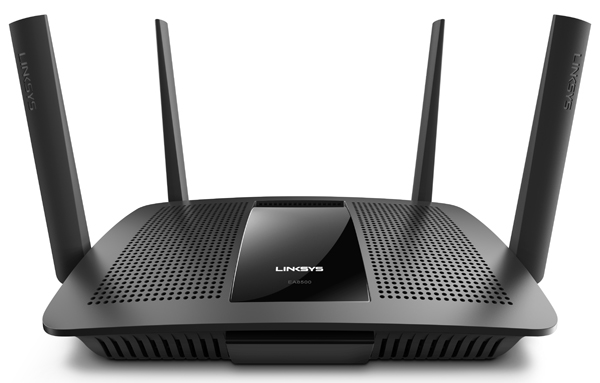Qualcomm's MU-MIMO Wave Continues To Roll Across The Industry
Qualcomm Atheros, a subsidiary of Qualcomm International, just made two announcements in support of the semiconductor company's push of its MU|EFX line of technology currently used in the VIVE brand of networking products.
Leading the charge are two new MU-MIMO networking modules, one for home networking products and the second one for enterprise networks. The second announcement is an update of the different vendors that will be launching MU|EFX-based products in the near future.
The modules that Qualcomm Atheros is announcing are the QCA9984 for home routers in the consumer market, and the QCA9994, which is designed for enterprise access points.
The new modules will not only support MU-MIMO, but will also provide twice the current capacity of current 80 MHz channels -- that's 160 MHz contiguous or 80+80 MHz non-contiguous. The modules will also be package compatible to facilitate transitions with existing designs and will add efficiency by letting radios move between channel widths, providing a degree of "bandwidth agility" for the networking devices that use them on a packet-by-packet basis.
According to Qualcomm, the biggest benefit from these new solutions will be a performance boost of two to three times the speed of non-MU-MIMO products, reaching speeds of up to 1.7 Gbps.
Both the QCA9984 and QCA9994 are currently in the sampling phase of pre-production, but they're expected to hit the market starting in late Q4 2015 and Q1 2016, respectively.
MU|EFX is the branding name for Qualcomm's MU-MIMO line of products. Brought to light earlier this year at CES Las Vegas, MU-MIMO is one of the key technologies added in Wave 2 of the 802.11ac specification.
Get Tom's Hardware's best news and in-depth reviews, straight to your inbox.
In development over the past few years, several networking vendors finally announced new network router products based on MU-MIMO at this past January's Consumer Electronics Show.
MU-MIMO (short for "multi-user, multiple input and multiple output") enhances the current 802.11ac spec by allowing routers to give multiple devices simultaneous access to the wireless network, whereas previous versions of MIMO-enabled routers only allowed access to one device at a time. Currently available with support for up to four devices connecting at the same time, what MU-MIMO provides in the end is a better multi-tasking service for the growing number of wireless devices at home and in the enterprise.
MU-MIMO will prove beneficial for households, especially in the home market. According to a joint survey between IDC and Linksys, 84 percent of the respondents said they stream content like movies and TV shows while also enjoying other streaming services for music, games and surfing the Internet at the same time.
Further, two-thirds of the same group said that they currently have at least five devices connecting to the Internet at the same time, which could include devices such as computers, phones, tablets, DVRs, smart home products and gaming consoles. As more home products become web-enabled, there will be a need to look at faster, more efficient ways to handle the increased wireless traffic in the home, something that MU-MIMO could help alleviate, especially as the spec matures and prices drop to affordable levels.
A very important note to know about enjoying the full MU-MIMO experience is that routers/APs and client devices need to be compliant to the Wave 2 spec. Older endpoint devices such as phones, laptops and Wi-Fi adapters will still be backward compatible with MU-MIMO, but these older devices will be grouped together and assigned to a wireless channel specifically for slower devices and, similarly like SU-MIMO, will have to wait their turn to get to the router. This will eventually change as MU-MIMO continues to enter the picture.
The earliest major MU-MIMO announcement made since CES 2015 was from Linksys, when it released its EA8500 Smart Wi-Fi router with MU-MIMO. As with a lot of vendors, the focus of introducing MU-MIMO into the wild was through the home router market. Now, in the second part of its announcement today, Qualcomm Atheros mentioned both consumer and enterprise companies that are planning to implement MU-MIMO products.
Home networking divisions of companies such as Amped Wireless, Linksys and Netgear are looking to add and develop more routers using MU-MIMO into the wireless networking market, while Dell and Acer have also pledged to add laptops to the Wave 2 technosphere. Finally, smartphones aren't that far behind. Companies such as Xiaomi and ZTE's Nubia Mobile, both Chinese telecommunications companies, have also stated that MU-MIMO will be delivered in future products.
For the enterprise, companies like Aruba and Hitron have announced that they will be having MU-MIMO products available in Q3 2015.
Follow us @tomshardware, on Facebook and on Google+.


